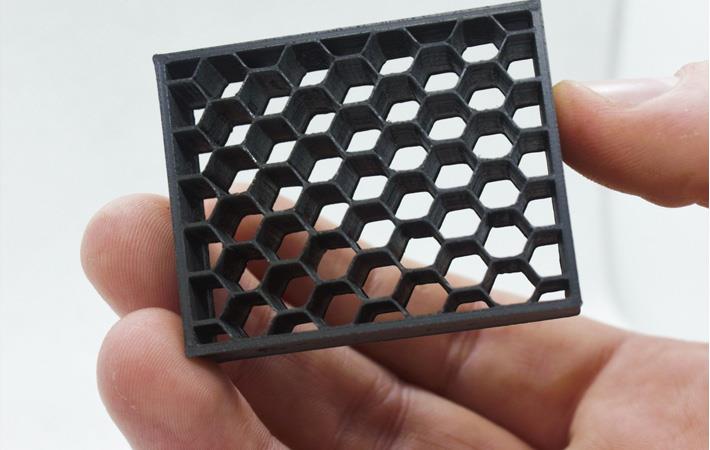Additive Composite Uppsala together with the Swedish filament developer Add North 3D has introduced a new high-technology polymer composite for radiation shielding applications. The product is based on research carried out by Uppsala University. The new product provides an alternative to other materials such as cadmium metal in many applications.
The material consisting of boron carbide within a co-polyamide matrix, has been developed and produced as filaments optimised for 3D-printing. The boron carbide provides effective absorption of neutrons such as those produced at major research facilities, in the nuclear industry or other places that use radiation sources. The ability to make complex shapes easily by means of 3D-printing is important to provide effective shielding of stray radiation and to provide collimated beams.Additive Composite Uppsala together with the Swedish filament developer Add North 3D has introduced a new high-technology polymer composite for radiation shielding applications. The product is based on research carried out by Uppsala University. The new product provides an alternative to other materials such as cadmium metal in many applications.#
The product is a joint development of Additive Composite Uppsala and Add North. The new product, marketed under the name Addbor N25, provides an effective alternative to the use of other materials such as cadmium metal in many applications. The toxicity of cadmium has led to it being banned for most purposes. Availability of the new material that can be readily fabricated to complex shapes should reduce the need for cadmium. Additive Composite has already sold several hundred parts in its boron carbide composites to detector and sample environment groups at the European Spallation Source (ESS) being built in Lund.
Adam Engberg, CEO, Additive Composite Uppsala, commented that “Additive manufacturing is changing how many products are being designed and produced. We believe that Addbor N25 contributes to this development and helps both industry and large research facilities to replace toxic materials that could eventually contaminate the environment.” He added “Our new product is the first in a range of radiation shielding materials that we are currently developing.”
Fibre2Fashion News Desk (SV)


